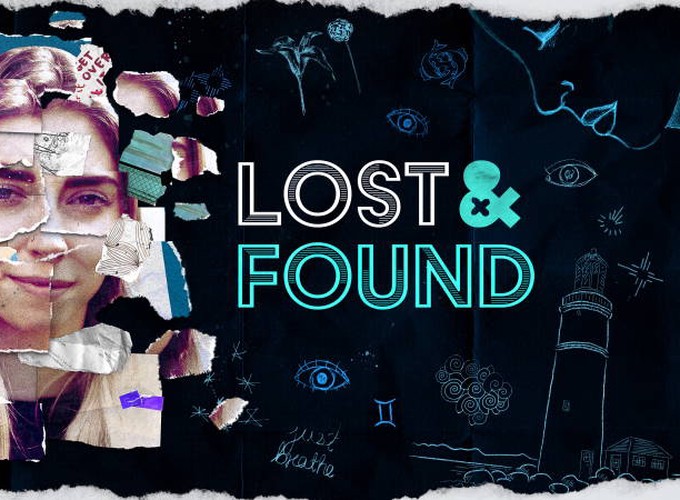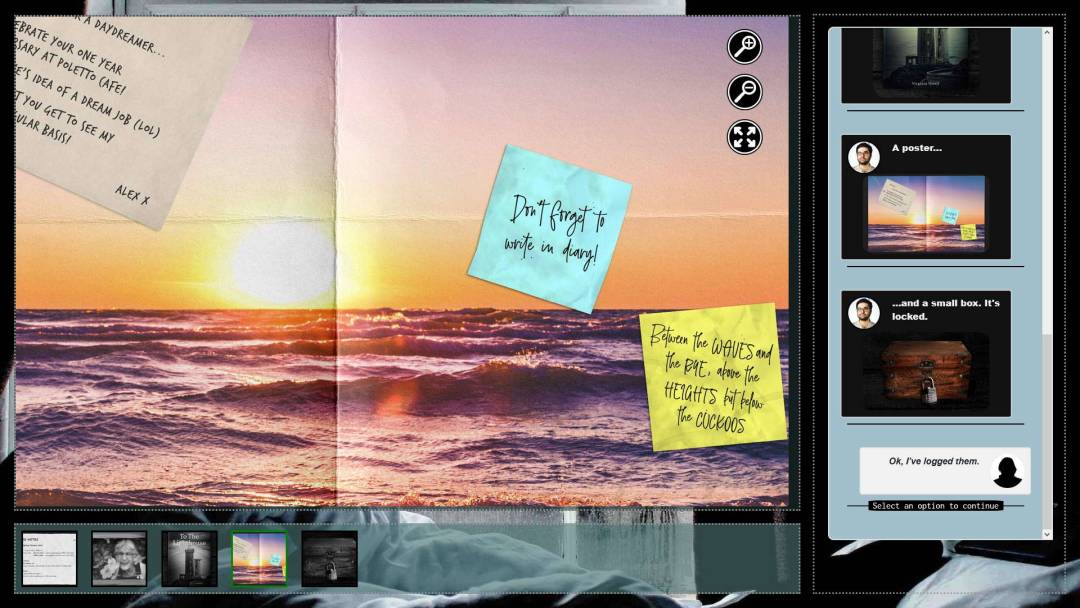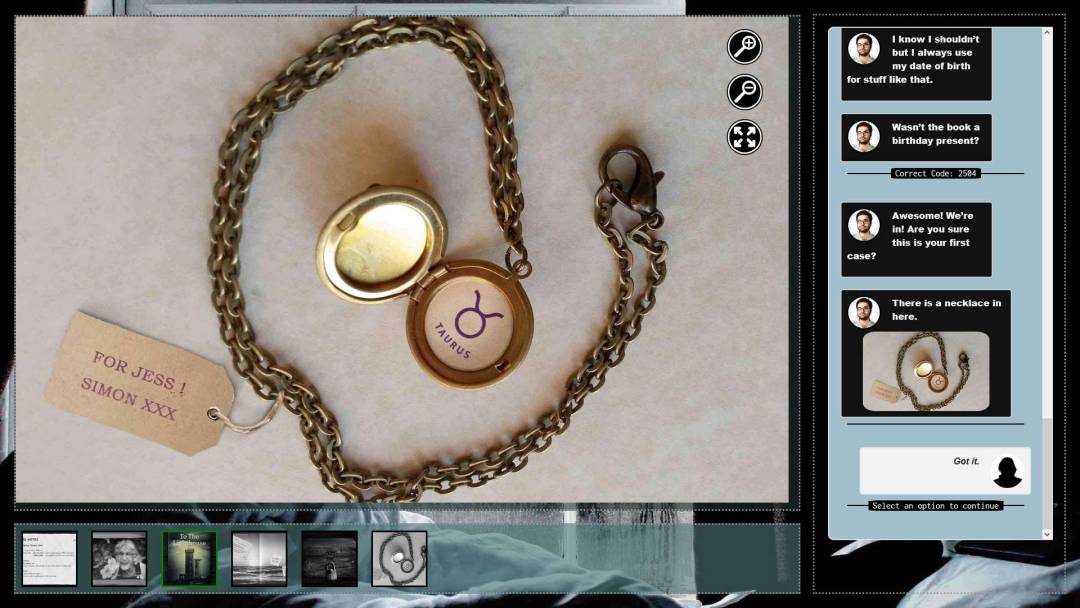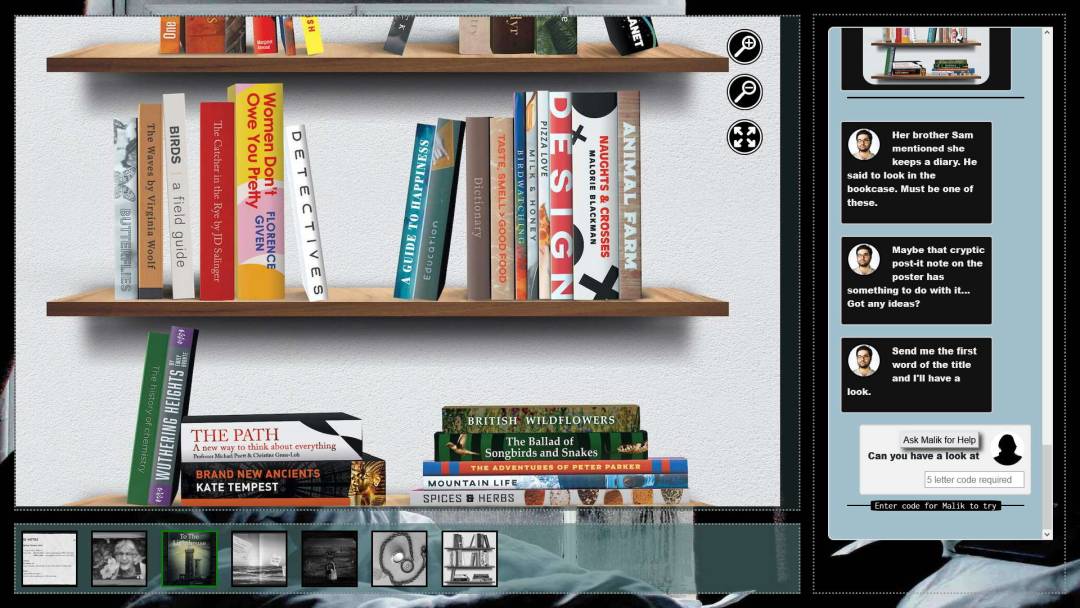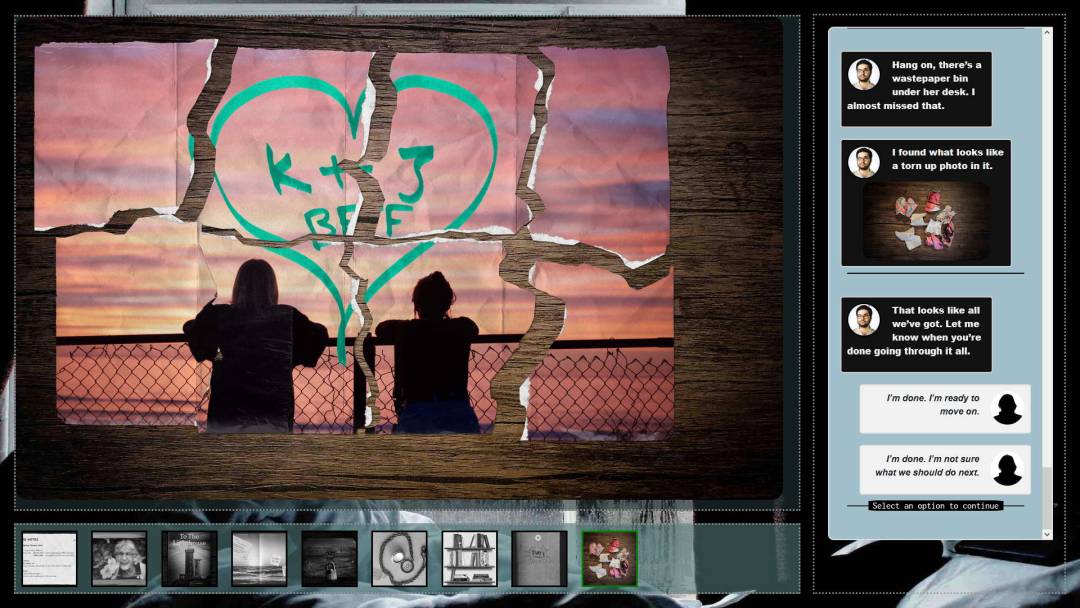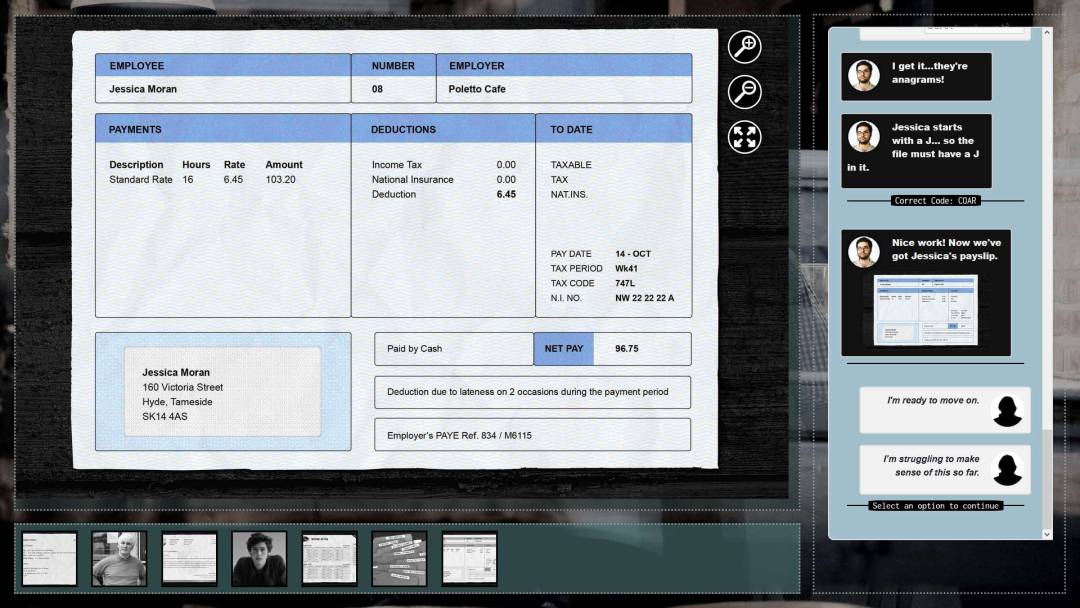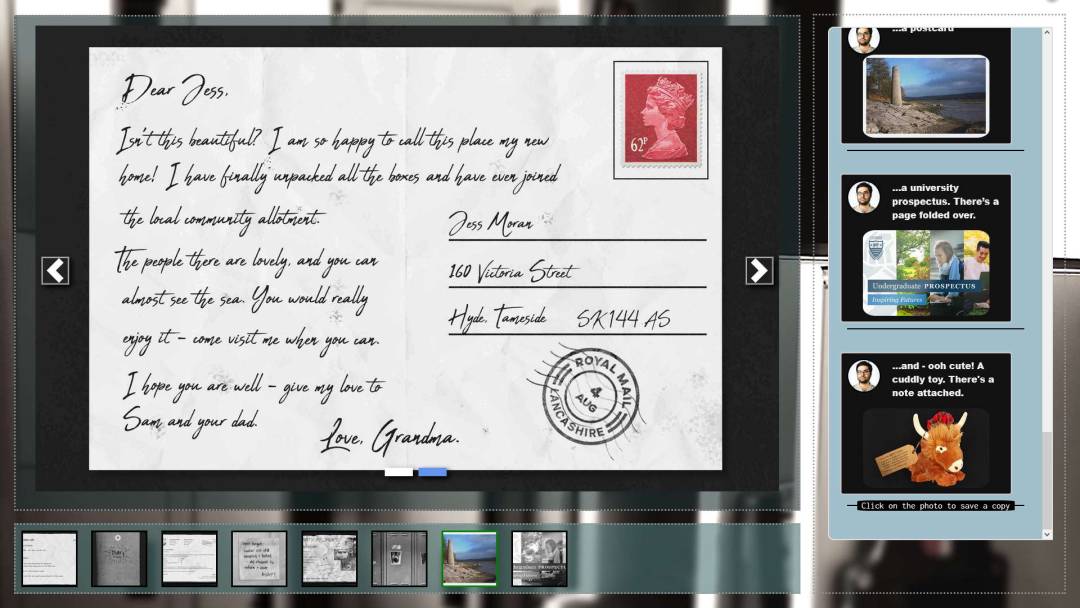Lost & Found is a game built for 42nd Street in Manchester.This is the only game on this list that you can play right now in your browser here.
‘Lost & Found’ is a narrative game exploring youth loneliness. It’s aimed at young people 13-25, parents and professionals working with young people. But everyone is welcome!
You are a trainee police officer, and are going to work alongside your colleagues to solve a mystery of a MISPER (missing person).
The online successor to ‘Missing’
It was based on an experience from 2017 called ‘Missing’ created by Jana Wendler and Tricia Coleman. It was a live immersive experience for young people which explored youth loneliness.
“The story/experience is built around a missing person investigation. It comprises one live actor/facilitator (a Police Detective), a bank of evidence which the audience/participants (Police Trainees) work through to build the story, and a series of phone calls which punctuate the experience. In finding out why Jessica went missing, participants built a picture of a person who was struggling and feeling isolated in many areas of her life.
The aim is not to offer a quick fix, a cure, or an easy answer – but to suggest ways young people can manage feelings of loneliness so they don’t become overwhelming. We based it on research from MMU who were partners on the project and then toured it with youth groups across the UK to get a sense of how it was affecting different groups of young people and to build understanding between youth workers and young people on the issues they were experiencing.”
There’s a video of the original experience here
The goal of Lost & Found was to revisit this issue of loneliness in young people but as an online experience.
We kept some aspects from the original:
- Jessica has gone missing
- Police investigation
- Evidence Gathering
- Opportunity for young people to discuss issues of loneliness
The switch to online:
My preference is to make experiences that take place in the real world. A real experience can be so much more rewarding.
- Phone rings, a player answers and you talk to a real person
- Recording evidence on charts. Being given evidence. Open and handle it.
- Having a rucksack and hiding information in pockets.
- Connections with players / characters in the room
- Ability to make changes on the fly
COVID has meant that I’ve had to reconnect with my videogame roots and embrace making things that are mainly digital.
The benefits of taking a project online
Fortunately, it’s not all bad and there are absolutely benefits to taking projects online.
We can run this experience whenever we like (we don’t need to set-up a room) we don’t need an actor and assistants. We don’t need to transport all the evidence to a location and hope we haven’t forgotten anything.
While pre-recorded videos are no match for live actor engagement - it allows us to use more characters in the experience.
Because there is no really a cost to running the experience - it can scale almost limitlessly. And in theory anyone, anywhere in the world is able to play the experience.
We do still have the option to run it as a semi-physical event; we can gather small groups and give each a laptop / tablet and with a facilitator in the room.
Game Progression
In the original experience all the evidence was available in the room. A matching mini-game was used as a blocking mechanism - delaying access to this evidence - instead of players having access to it all at once.
This is where the online version deviates quite significantly from the original. The evidence is spread out over a variety of locations and this creates a natural sense of progression. With our online version, we can teleport the players to other (virtual) locations instantly. Whereas a real experience it requires us to have access to other physical locations and dress them as such.
In the original version of Missing, facilitators in the room can drive the story forward - online we need a different solution. This is where the WhatsApp style chat comes in.
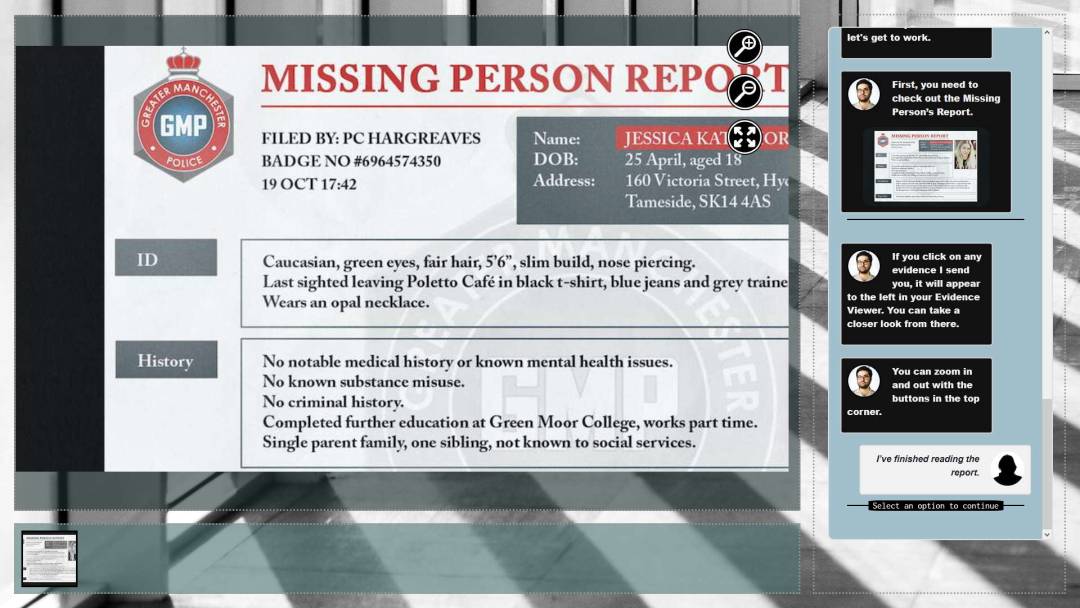
WhatsApp Style chat
The game is driven by a chat window with our colleagues: Senior Investigating Officer Monica Clark and our side-kick Malik. Monica is who the players are reporting to and she gives out the overall mission and direction. Whereas, Malik is our man on the ground as it were. He is out visiting locations, speaking to Persons of Interest and collecting evidence on our behalf. He sends this over for us for us to explore and analyse.
Evidence Viewer
The chat window occupies the right 20% of the screen the remaining 80% is the Evidence Viewer. This is where we can explore and analyse the evidence that Malik provides us with. Overtime, our evidence window becomes full with documents, books, photographs, diaries, notes, testimonies, etc.
It’s important that players feel connected with the evidence. This is something that is more difficult to create online - it’s never quite as satisfying as handling an original, physical object. Niel’s did a fantastic job of making these items feel authentic and bringing them to life.
As the experience progressed players reach blocking puzzles. Puzzles that they need to solve in order to progress the story. For example, early on you find a locked box belonging to Jessica which you need to gain access to. You’ll need to figure our the 4 digit solution and give the details to Malik so that he can open it and access the items inside.
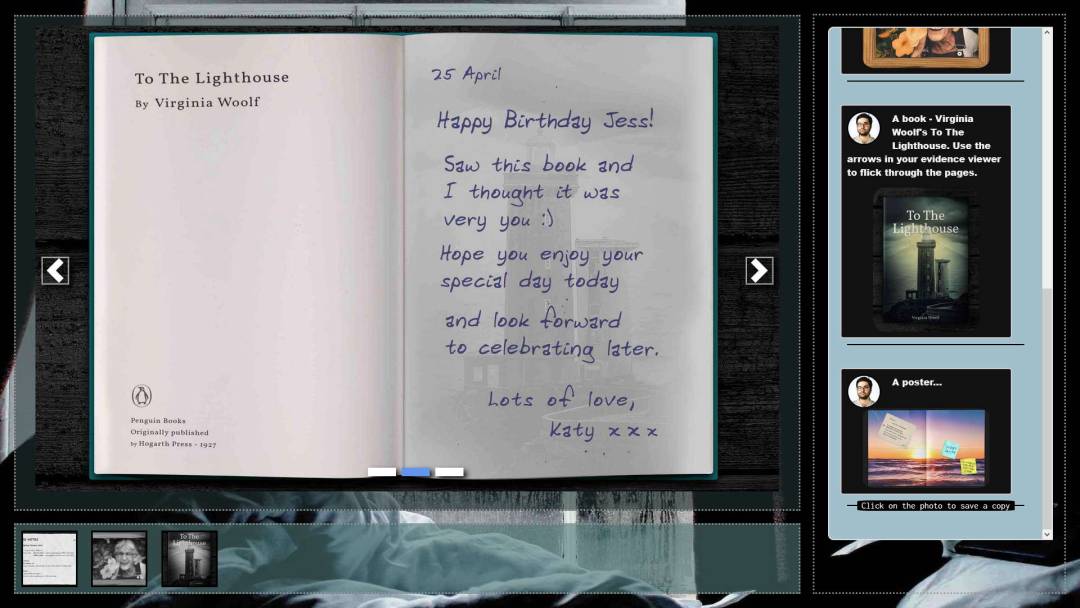
Technology
This is a new online platform that I built using Microsoft’s client-side Blazor WASM technology. It still uses javascript / css in places.
Hopefully, I’ll have an opportunity to use this platform again for another project in the future.
Development Team
This has been one of my favourite projects to work on (thanks to the collaboration with @JanaWendler & @TriciaColeman) It was a rare project where I didn’t take the lead game design role. Since this was based on their previous project - it was a more natural fit for Tricia and Jana to lead on story and puzzle creation. I was able to focus mainly on technology development and be involved in discussions at high level game design / user experience ideas with.
Between Jana, Tricia and I - we created the first versions of everything: puzzles, audio, graphics, script. We had lots of help to improve iterations on these. E.g., Niels Dielen on Graphic Design and Vee Uye on the writing.
We were able to reuse some video content from Missing; police interviews with Jessica’s colleagues and friends. In other cases we were able to get the original actors back in to film some new scripts.
Overall
Originally, we intended to have some final playtesting sessions where we brought teams together and we observed and collected play feedback. Unfortunately, COVID prevented this from happening - so all our playtesting was done remotely. Feedback has been positive and we have made adjustments throughout development based on these playtests. Personally, I haven’t seen our target audience play the game - so it’s difficult to understand how well we hit our initial brief.
It was an enjoyable project to work on - partly due to the good relationship within the team and partly due to the sharing of work and longer development cycle. It was an unusual experience to not be working in a short-fat (long hours compressed into a short time) approach. When we did meet regularly the game was being pushed in all directions.
I replayed the game as part of writing this blog post and I’m still really pleased with it. Definitely a fantastic collaboration and end product!
